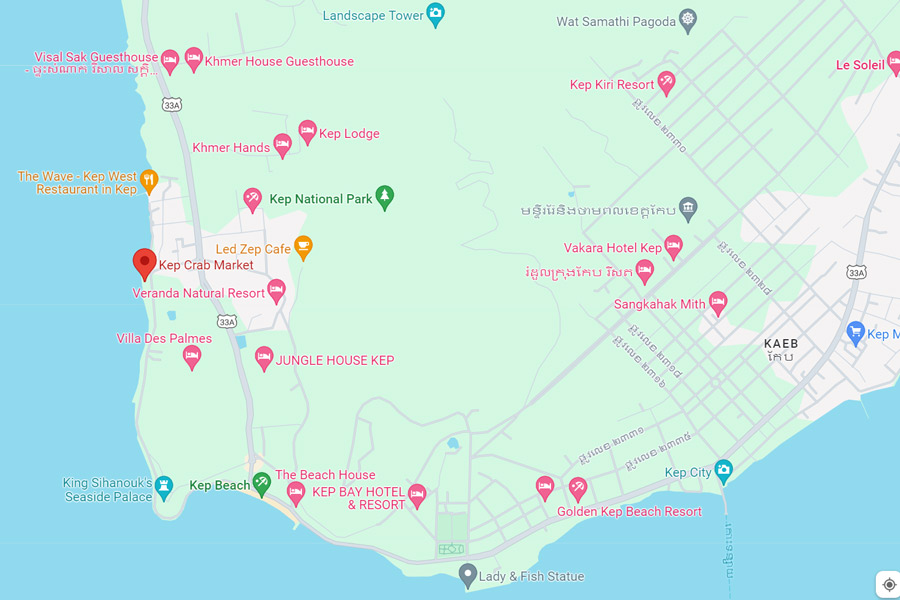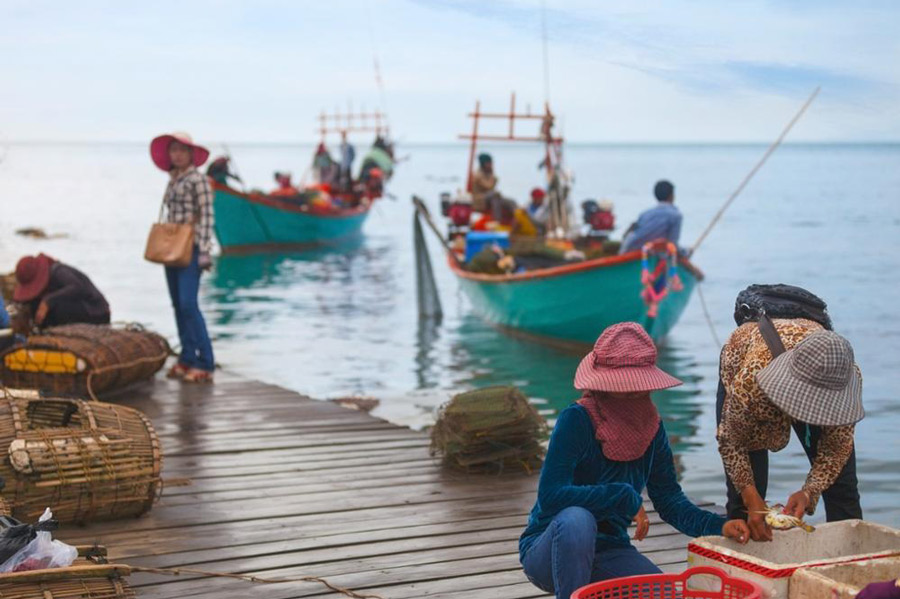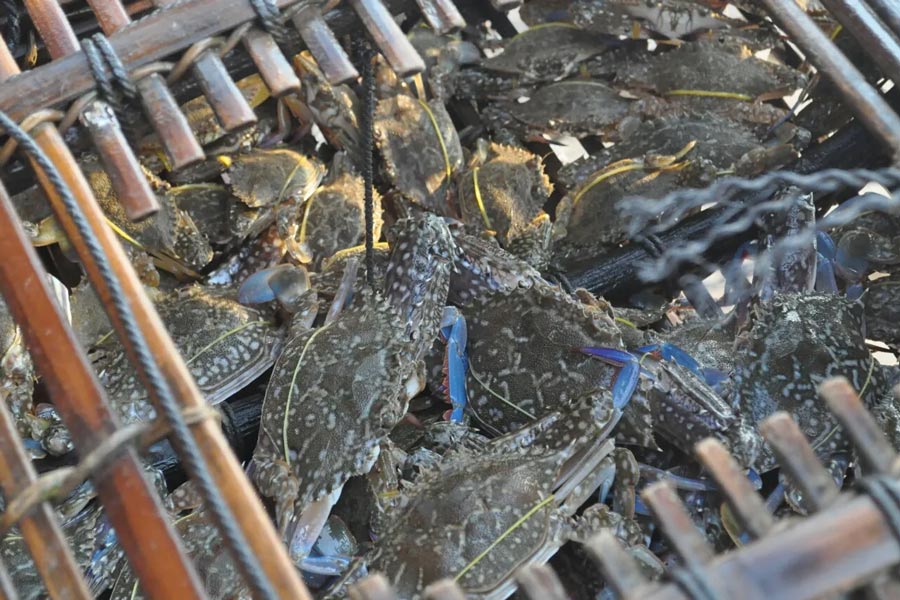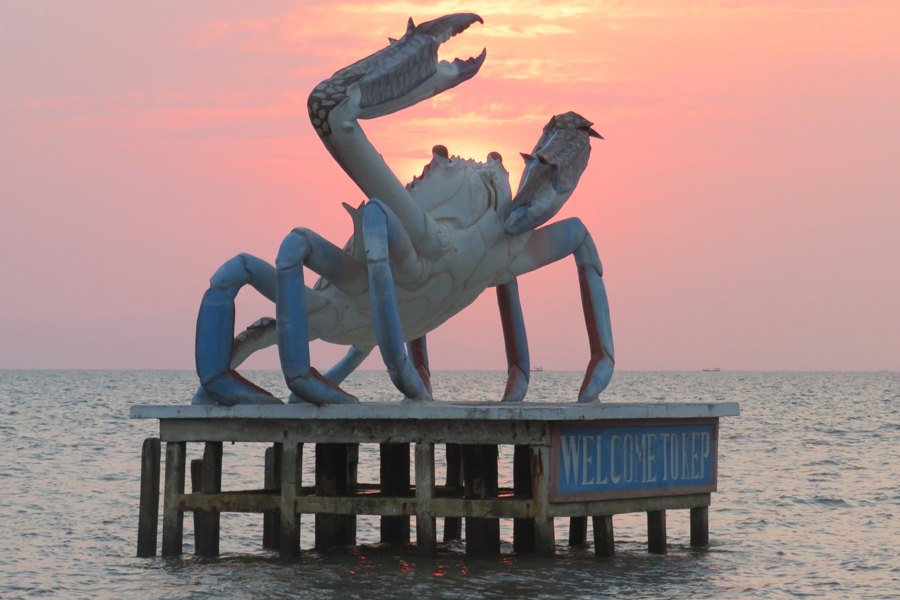Crab Market

The Crab Market in Kep, Cambodia, stands as a vibrant testament to the coastal province's rich seafood culture. Nestled along the Gulf of Thailand, this market is a haven for seafood enthusiasts, offering a diverse array of fresh catches with a spotlight on the renowned Kep crab.
 The market is located near the waterfront
The market is located near the waterfront
As fishing boats unload their daily harvest, the market buzzes with activity, providing visitors with an authentic and lively experience. From succulent crabs to other ocean delights like prawns and squid, the market showcases Cambodia's seafood bounty. The open-air setting, combined with the backdrop of the sea, creates a picturesque atmosphere for indulging in local culinary delights. Whether patrons choose to explore the stalls within the market or venture to nearby restaurants and street food vendors, the Crab Market in Kep has become a must-visit destination, blending delicious seafood with the natural beauty of its coastal surroundings.
The Crab Market in Kep, Cambodia, boasts a fascinating history that parallels the region's maritime legacy and the gradual evolution of Kep from a small fishing village to a renowned seafood destination. Originating from Kep-sur-Mer during the French colonial period, the area's coastal charm and access to the Gulf of Thailand's bountiful marine resources laid the groundwork for what would eventually become the Crab Market. In its earliest days, the market likely started as an informal gathering place for local fishermen to trade and sell their daily catches. As Kep underwent development and urbanization, the market expanded to meet the growing demand for its seafood, particularly the iconic Kep crab, known for its delectably sweet and succulent meat.
 A morning market scene
A morning market scene
The market's historical significance extends beyond its commercial role; it has become a cultural and culinary landmark, embodying the spirit of Kep's coastal identity. The gradual transformation of the market reflects not only changing economic dynamics but also the cultural importance of seafood in the region. The fame of the Kep crab, recognized for its unique taste and high quality, played a pivotal role in elevating the market's status over time.
Throughout the years, the Crab Market has weathered various changes, adapting to shifting tourism trends and the influx of visitors seeking an authentic seafood experience. The daily ritual of fishing boats unloading their hauls has become an integral part of the market's ambiance, creating a dynamic and lively atmosphere that captivates both locals and tourists alike.
In response to the growth of tourism, the market has diversified its offerings, incorporating a range of culinary delights beyond fresh crab. From local seafood specialties to international flavors, the Crab Market has become a melting pot of culinary experiences, contributing to its status as a must-visit destination in Kep.
 Fresh crabs are caught on the high seas
Fresh crabs are caught on the high seas
Today, the history of the Crab Market stands as a testament to Kep's maritime heritage and the resilience of a humble marketplace that has grown into a vibrant cultural and gastronomic hub. Visitors can not only indulge in the freshest seafood but also immerse themselves in the stories and traditions that have shaped this iconic destination on Cambodia's coast.
You may also like: Finding Where to Stay in Phnom Penh
The best time to visit the Crab Market in Kep, Cambodia, largely depends on weather preferences and travel considerations. However, generally, the period between November and February is often considered the optimal time for visiting Kep, including its famous Crab Market. Here are some factors to consider:
 Kep Crab Statue
Kep Crab Statue
1. Cooler Weather: The months from November to February constitute the dry season in Cambodia, characterized by cooler temperatures and lower humidity. The weather during this time is more comfortable for outdoor activities and exploration, making it an ideal period to enjoy the open-air setting of the Crab Market.
2. Less Rainfall: The dry season typically experiences less rainfall, reducing the chances of interruptions to outdoor plans. This can be particularly beneficial when strolling around the market, exploring the nearby beaches, and enjoying the coastal views.
3. Peak Tourist Season: Keep in mind that the dry season coincides with the peak tourist season in Cambodia. While this means more favorable weather conditions, it also implies larger crowds at popular attractions, including the Crab Market. If you prefer a quieter experience, consider visiting during the shoulder seasons (October and March-April).
4. Seafood Availability: While the Crab Market operates year-round, the availability of certain seafood may vary seasonally. The dry season is generally a good time to enjoy a variety of fresh catches, including the famous Kep crab.
To reach the captivating Crab Market in Kep, Cambodia, there are various transportation options depending on your starting point. If you're traveling from the bustling capital, Phnom Penh, you can opt for a 4-5 hour bus journey from terminals like Phnom Penh Sorya Transport, or choose the convenience of a private car or taxi for a quicker ride of 3-4 hours. From the coastal town of Sihanoukville, buses and private transportation offer a scenic 2-3 hour route. Alternatively, if you find yourself in the charming town of Kampot, a 30-45 minute tuk-tuk or motorcycle taxi ride will bring you to Kep. Once in Kep, various local transportation options, including tuk-tuks and taxis, make navigating the short distance to the Crab Market easy. It's always recommended to check current transportation options and schedules, considering your preferences for comfort and convenience when planning your visit to this renowned seafood haven.
You may also like: What to buy as gifts in Cambodia